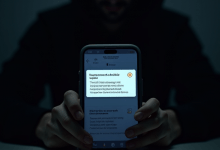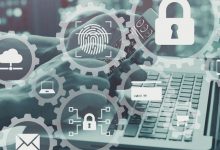Data Privacy in the Era of Data Leaks: Navigating the Challenges and Solutions
Data Privacy in the Era of Data Leaks: Navigating the Challenges and Solutions
In today’s digital age, data privacy has become a critical concern for individuals, businesses, and governments alike. With the increasing reliance on technology and the vast amounts of personal information being collected and stored, the risks of data leaks and breaches have also grown exponentially. In this article, we will explore the challenges posed by data leaks and the solutions available to navigate this complex landscape.
Data leaks occur when sensitive and confidential information is unintentionally or maliciously exposed to unauthorized parties. These leaks can be devastating, leading to identity theft, financial loss, reputational damage, and legal repercussions. Moreover, they can erode trust in institutions that hold personal data, ultimately undermining the foundations of our digital society.
One of the biggest challenges in combating data leaks is the sheer volume and diversity of data we generate, share, and store. From social media platforms to online shopping platforms, our personal information is spread across numerous platforms, making it difficult to keep track of where and how it is being used. Furthermore, our reliance on digital technologies means that even mundane activities like browsing the internet or using a smartphone generate an abundance of private data, which can be vulnerable if not adequately protected.
Cybercriminals are constantly developing sophisticated techniques to exploit vulnerabilities in data security systems. From phishing attacks and malware to ransomware and hacking, cyber threats are constantly evolving. This dynamic landscape makes it challenging for organizations and individuals to stay one step ahead and protect their sensitive information effectively.
However, there are a variety of solutions and best practices that can help navigate these challenges and mitigate the risks associated with data leaks. Here are a few key strategies:
1. Encryption: Encryption is the process of converting data into a code that can only be deciphered by authorized individuals. Data encryption ensures that even if it falls into the wrong hands, it remains unintelligible, offering an added layer of protection against data leaks.
2. Two-factor authentication (2FA): 2FA adds an extra layer of security by requiring users to provide two different forms of identification before accessing an account or system. This helps protect against unauthorized access even if passwords are stolen or compromised.
3. Regular updating and patching: Software vulnerabilities often serve as entry points for cybercriminals. Regularly updating and patching operating systems, applications, and firmware helps prevent potential vulnerabilities from being exploited.
4. Privacy-by-design approach: When developing new products, systems, or services, organizations should prioritize privacy from the outset. By implementing privacy-enhancing technologies and embedding privacy principles into the design process, they can build robust safeguards against potential data leaks.
5. Employee training and awareness: Human error is a significant factor in data leaks. Organizations should invest in comprehensive privacy training programs to ensure that employees understand the importance of data privacy, recognize potential risks, and are equipped with the necessary knowledge to navigate securely in the digital landscape.
6. Compliance with regulations: Governments around the world have started introducing data privacy regulations such as the General Data Protection Regulation (GDPR) in the European Union and the California Consumer Privacy Act (CCPA). Adhering to these regulations helps ensure that organizations meet minimum standards for data protection and privacy, and also builds trust with customers and stakeholders.
7. Regular audits and risk assessments: Regularly assessing and evaluating existing data protection measures and conducting comprehensive audits can help identify vulnerabilities before they are exploited. By staying proactive, organizations can better protect sensitive data and respond promptly to potential leaks.
In conclusion, data privacy in the era of data leaks presents a complex and ever-evolving challenge. However, by employing encryption, implementing 2FA, regularly updating and patching systems, adopting a privacy-by-design approach, investing in employee training, complying with data privacy regulations, and conducting regular audits, organizations and individuals can navigate this landscape more effectively. By prioritizing data privacy and taking proactive measures, we can build a more resilient digital society and protect ourselves and our information from the risks posed by data leaks.






I blog frequently and I really appreciate your content. This great article has really peaked my interest. I am going to book mark your blog and keep checking for new details about once a week. I subscribed to your Feed as well.
welcome))